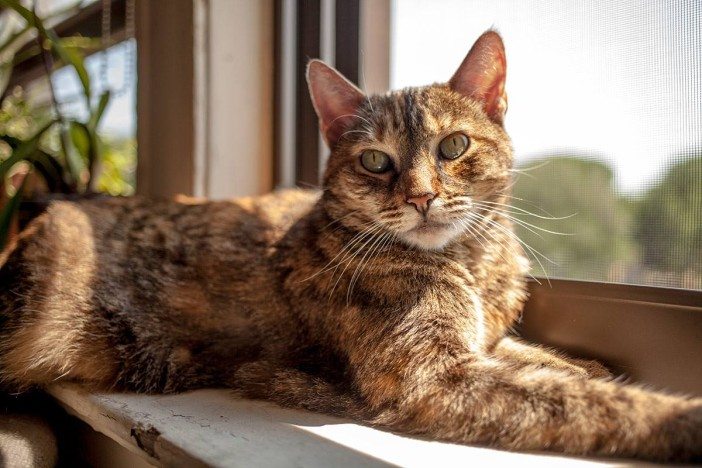Cats come in a plethora of coat colors and patterns. Whether you want a white, orange, black, or grey cat, you will get it.
There are even grey or blue-colored cats that look ridiculously cute.
Apart from color, a cat can also have a pattern such as a tabby, tortoiseshell, calico, and more.
Cat owners imagine that the color of their cat has nothing to do with anything else but it really does.
For one, it has a direct effect on the beauty of your feline friend.
Secondly, coat color affects a number of other things such as personality, availability, grooming needs, and more.
Before you buy or adopt a new kitty, therefore, it’s always a good idea to know what to expect from your feline friend.
This is why today I will walk you through one of the most cute coat colors among felines: Torbie.
From physical characteristics, differences from other tri-color coat patterns, impacts on health, to fascinating facts, here is all you need to know about this beautiful coat pattern.
TORBIE CATS OVERVIEW
NAME: Torbie
NICKNAMES: Reverse torties, reverse calicos, striped tortie, patched tabbies, Tabby with patches
COAT PATTERN: Mixture of Tortoiseshell & Tabby Stripes
COAT TYPE: Long Or Short
PERSONALITY: A bit aggressive, energetic, and sassy
BREEDS THAT MANIFEST THE PATTERN: Persians, British Shorthair, American shorthair, Japanese Bobtail, Main coon, Cornish Rex
HYPOALLERGENIC: No
AVAILABILITY: Rare
Preamble:
Before we talk about a Torbie cat (plus similar cat names/terms like Tortoiseshell aka Tortie, Tabby, and Calico), I would love to bring to your attention that these names describe coat patterns, which result from certain genetic combinations in cats.
They are NOT actual cat breeds. So, there is no cat breed referred to as a Torbie, a Tortie, Calico, or Tabby.
Even if you are tempted to check Cat Fancier’s Association list of breeds, you won’t find them listed there!
Several breeds including Persians, British Shorthair, American shorthair, Japanese Bobtail, Main coon, Cornish Rex, and some mixed breeds can exhibit these coat patterns.
Let’s continue…
What Kind of Cat is a Torbie?
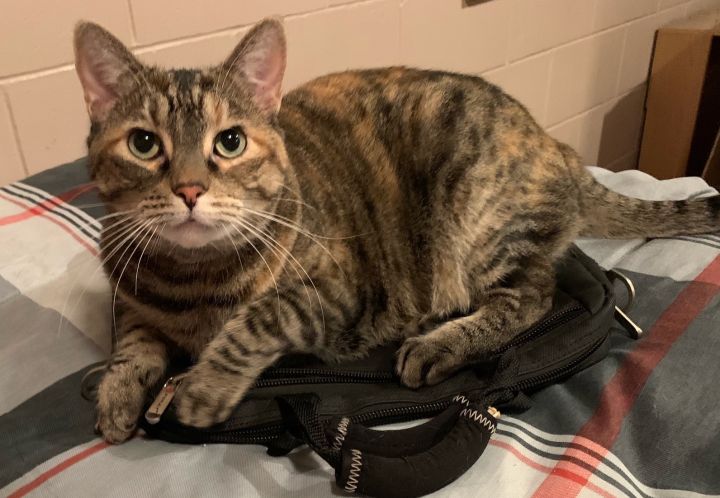
A Torbie is basically a cat that exhibits a mixture of two coat patterns: Tortoiseshell and Tabby coat patterns.
To be on the same page, it is important that we understand first the difference between a tortoiseshell and a tabby cat as well as closely related coat patterns like calico.
Tortoiseshell (aka Tortie cats)

Tortoiseshell cats are felines with tri-colored coats that resembles the shell of a tortoise.
(Yes, the name comes about because the coat color has the appearance of a tortoises shell).
The most common coat color combination in tortoiseshell cats is red and black.
You may also find other color combinations like orange, gold, or cream.
These can be either small patches of each color or brindle pattern, consisting of each color mottled throughout the body (Pictures # 1, 2 & 3)
Finally, there are muted tortoiseshell patterns, which feature gray and cream color combinations, giving them less vibrant coats (Picture # 4).
Generally, you will find very few white patches/color expressions in a tortoiseshell cat.
In other words, tortoiseshell cats either lack white or only have small white patches on their coats (Picture # 3).
Tabby Cats
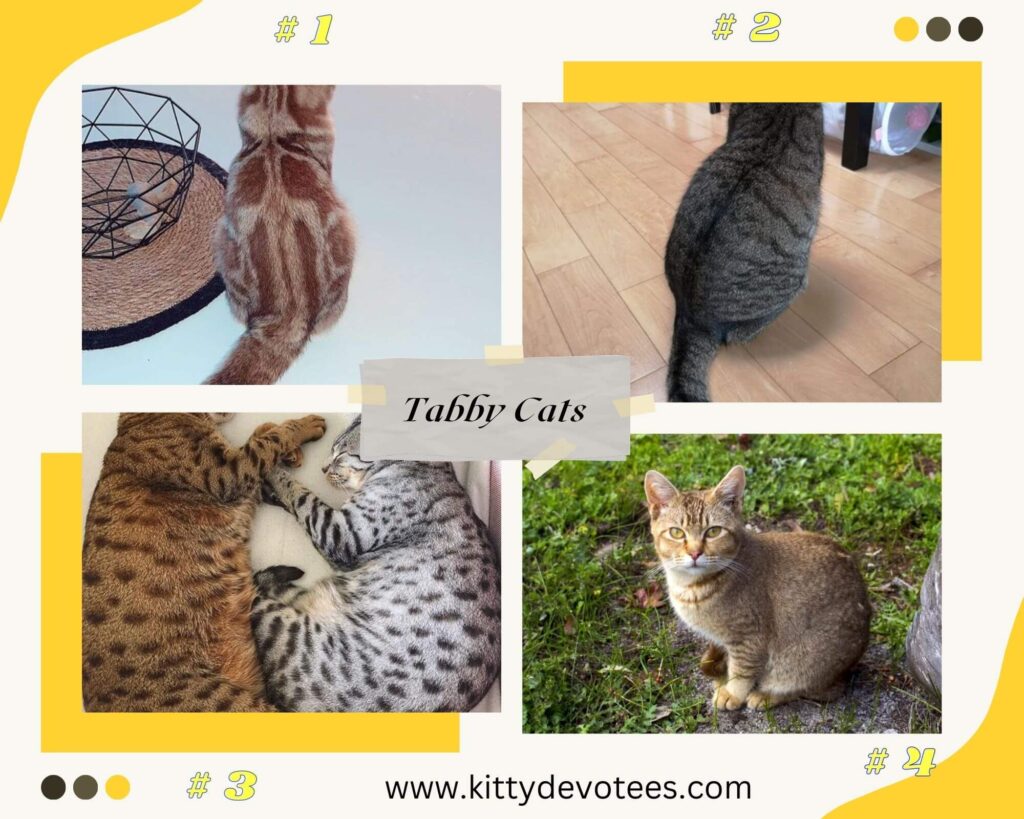
Tabbies are cats with distinctive stripes, lines, dots, flecks, or swirling coat patterns on their bodies, sides, shoulders, chest, neck, flanks, or tummy.
They also have a distinctive dark “M” on their foreheads, some form of “eyeliners” around their eyes, and thin pencil strokes on their faces.
Most tabby cats feature four distinct patterns:
- Classic (or Botched): Have bold whorl or butterfly patterns on their bodies (Picture # 1)
- Mackerel: Have symmetrical tiger-like stripes, which resemble the bones of a mackerel fish. (Picture # 2)
- Spotted: Have spots (not stripes) throughout the body like a leopard’s coat. (Picture # 3)
- Ticked: Have distributed ticks of color that resemble salt or pepper. They don’t have stripes or spots like the above tabby patterns. (Picture # 4)
Calico Cats
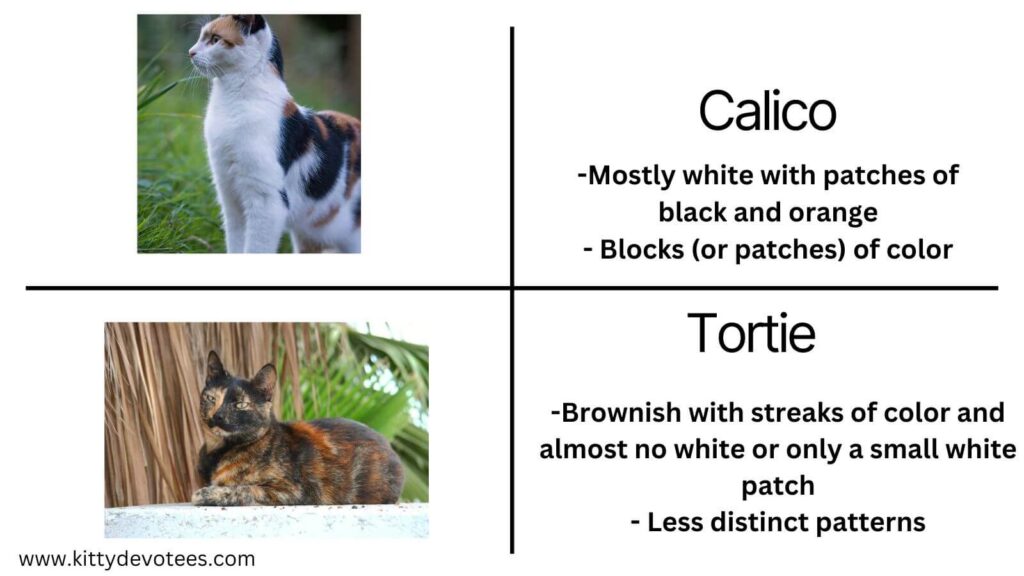
Calicos have at least three coat colors, which at their most basic include white, black, and orange.
But like Torties, you may also find other color variations like reddish, cream, blue-black, gold, or brown.
To this end, I know you are probably asking about the difference between Calico and Tortoiseshell cats…
Well, the two coat patterns are a bit confusing but here are the main differences:
- While both coat patterns feature black and orange coloration, Calicos are mostly white with patches of black & orange or cream & grey (i.e they have 25-75% of white areas in their coat).
- Torties, on the other hand, have mainly brownish coats with streaks of color and almost no white.
- The color combination on Calico cats is always big patches or blocks of color.
NB: Calico patch patterns are almost as unique as snowflakes and that’s why you will seldom see two exactly similar Calicos.
Torbies
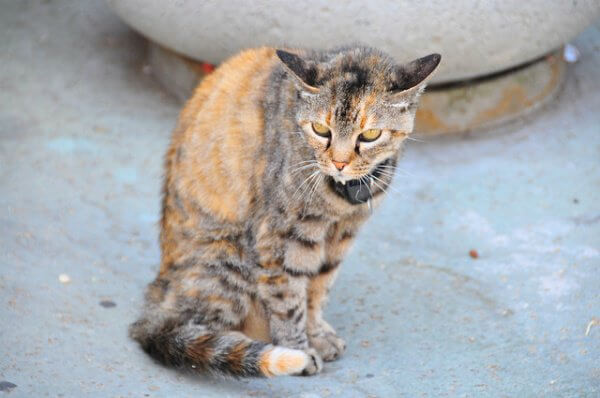
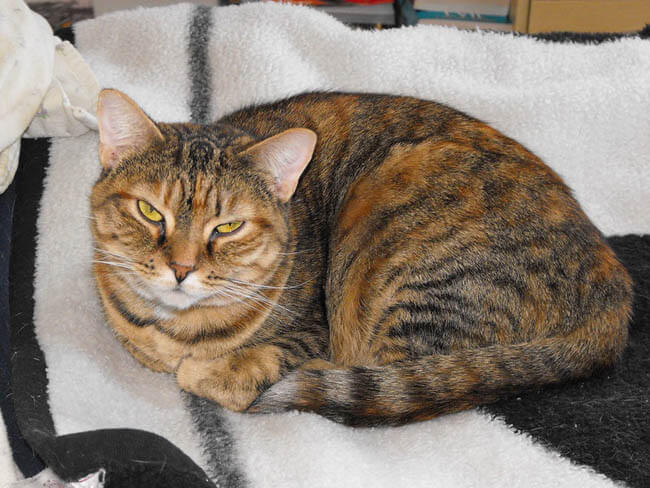
Now that we understand what tortoiseshell, tabby, and calico cats are, let’s shift our focus to Torbies…
Put simply, Torbies are mixtures of two coat patterns: Tortoiseshell and Tabby. So, they are basically Torties that also feature tabby stripes.
(As you have probably guessed, the term is simply a concatenation of the Tortie and Tabby words)
They are also referred to as patched tabbies because they are basically tabbies with patches of a secondary color—red or cream.
So, the biggest difference between a Tortie and a Torbie is the presence or lack of tabby stripes—the former lacks tabby markings or stripes while the latter features the stripes.
Given the combination of Tortoiseshell and Tabby coat patterns, Torbies are less common compared to plain tortoiseshell, tabby, and calicos.
Still Confused? Here Is How to Identify a Torbie
If you still can’t identify a Torbie patter, use the following steps:
- Check if you can see a tabby pattern (while at it, remember the four types of tabbies—classic, mackerel, spotted, and ticked)
- Next check for little patches of a secondary color (red or cream)
- If you can see both then you have a Torbie in front of you!
That’s it! Hopefully, you now know what a Torbie cat is.
Let’s now discuss other aspects of a Torbie cat…
Are All Torbie Cats Female?
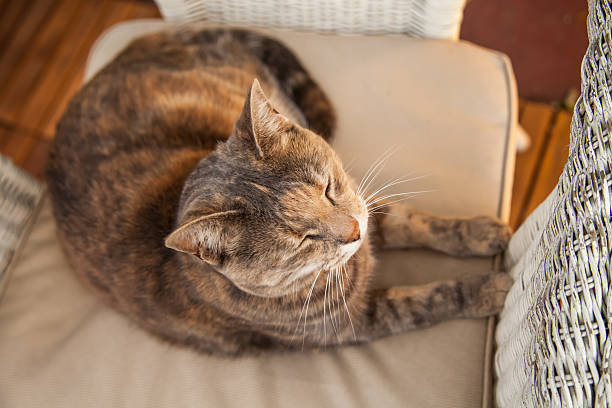
Most Tortiseshell cats (and by extension Torbies) are females. This is because the chromosome responsible for the coat color also determines the gender of the cat.
Here’s is a quick explanation…
The coat color of cats is determined by a combination of genes that control the production of pigments in their fur.
These genes are located on the X chromosome, one of the two sex chromosomes.
(I hope you can recall (from your biology class) that the two sex chromosomes are the X chromosome and the Y chromosome. In mammals, including humans and cats, females have two X chromosomes (XX), while their male counterparts have one X chromosome and one Y chromosome (XY)).
The genes that control coat color in cats are located on the X chromosome.
Since females have two X chromosomes, they can have two different versions of the coat color genes: the dominant black/brown coloration and the recessive red or orange coloration.
Male cats, on the other hand, can only inherit one version of the gene, so they can only be black/brown or red/orange, NOT both.
When a female cat inherits one X chromosome with the black/brown gene and one X chromosome with the red/orange gene, the two colors are expressed in different patches on her fur, creating the tortoiseshell pattern.
Therefore, a tortoiseshell pattern can only occur in cats with two X chromosomes (i.e. females).
To be male, a Tortie/Torbie will have to have three chromosomes XXY i.e a genetic mutation must occur that causes the expression of two X chromosomes besides the Y chromosome. (see the picture below)
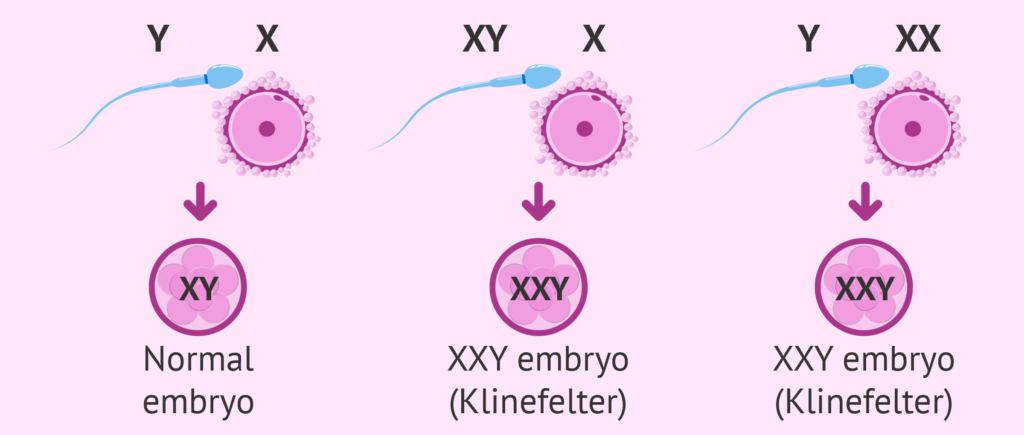
This phenomenon is often called Klinefelter Syndrome and is often associated with certain health/developmental issues.
For instance, Torties/Torbies with the condition are infertile.
Now Klinefelter Syndrome is relatively rare, occurring in about 1 in 500 to 1 in 1000 male births.
Hopefully, you can now see why male tortoiseshell cats are extremely rare, while female tortoiseshell cats are relatively common.
If you are still confused, consider watching the video below:
Like Torties and Torbies, Calicos are almost always female due to the same analogy.
See, the orange coat color in cats is controlled by a gene, O, which is located on the X chromosome.
Male cats have only one X chromosome, and if they inherit the O gene, they will be either OY (orange) or oY (non-orange color).
However, female cats possess two X chromosomes and can be OO (which denotes dominant orange), oo (which denotes recessive orange, resulting in a coat of another color), or Oo (which denotes tricolor with both dominant and recessive orange genes), thus increasing the likelihood of producing a calico pattern.
BUT
Tabby cats, unlike tortoiseshell, Torbie, and Calico cats, do not display a predominantly female gender bias.
In fact, the majority of ginger tabby cats are male.
The gene responsible for the ginger coat color is located on the X chromosome, and females require two copies of this gene to express it, while males need only one.
Therefore, the likelihood of a male ginger tabby cat is three times higher than that of a female.
Torbie Cats’ Health
Having a cat with a clean bill of health makes all the difference during pet parenting.
Well, even if you end up with a kitten with a few complications, it is in your best interest to be aware of the issues beforehand.
Well, the good news is that a cat with any of the above- mentioned tri-color coat patterns (a tabby, calico, torbie, or tortoiseshell coat pattern) is not directly prone to any health complications, thanks to the fact that these are just coat patterns NOT breeds.
To know what your torbie cat is prone to, check the breed.
If he is a Main Coon, for instance, expect him to have certain predispositions such as polycystic kidneys, hip dysplasia, and spinal muscular atrophy.
A Persian torbie cat may also be prone to a polycystic kidney ailment, bladder stones, PRA, cardiomyopathy, and dynamic retinal decay.
In short, always seek to find out the issues that your individual cat suffers from.
Torbie Cat Personality
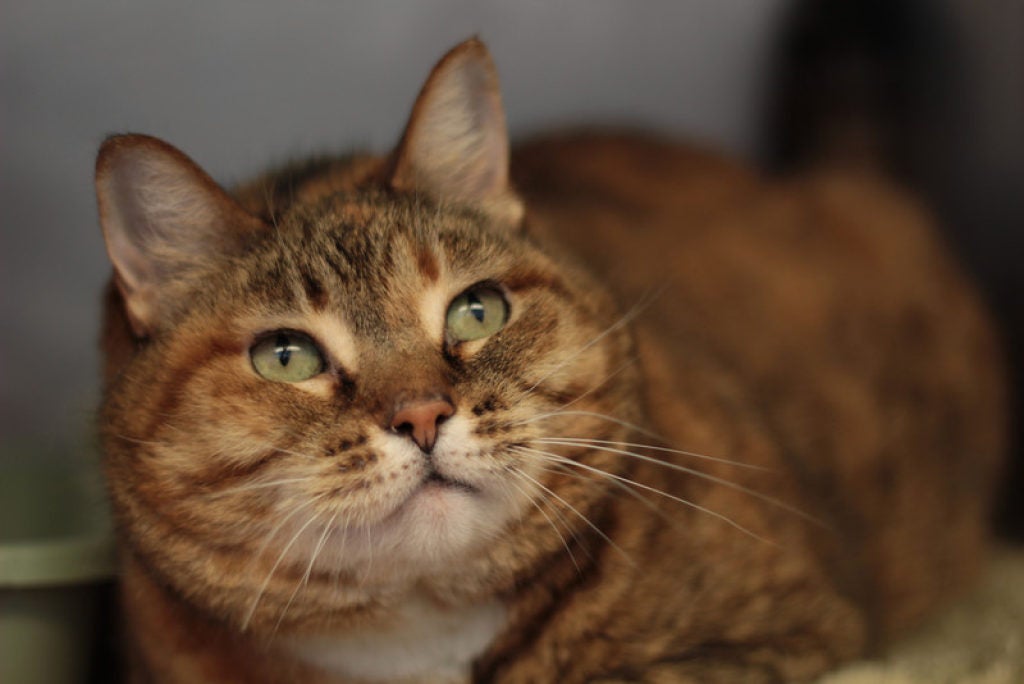
Since torbie is not necessarily the name of the breed but the coat color, personality characteristics is not specific to one special breed.
As aforementioned, you can find a Torbie in many of the available cat breeds including the American Shorthair, Persian, Maine Coon, Cornish Rex, British Shorthair, and more—which translates to one fact: varying personalities.
Having said that, cats of this specific color patterns tend to have a distinct personality or temperament.
UC Davis Veterinary Medical Teaching Hospital did a study on the link between coat color and behavior.
The conclusion was that cats that exhibit tortie coat pattern have a sassy temperament. This has since been referred to as ‘tortitude’.
Funny enough, most tortie owners agree that their fur babies are indeed a bit aggressive, energetic, and sassy.
They tend to have opinions on everything and will let you know what it is.
Lucky for you, they are also some of the most affectionate cats in the world.
They love human company despite being a tad independent like most cats.
Plus, their striking beauty will always blow your mind.
Related Post: 12 Least Affectionate Cat Breeds
Are Torbie Cats Hypoallergenic?
Unfortunately, you cannot tell whether your torbie is hypoallergenic or not simply by looking at the color of his coat.
Cat allergies are triggered by your body’s immune response to a specific protein.
The bad news is that all cats possess this protein no matter the color of the skin.
The good news is that all tortoiseshell cats including torbies tend to produce the protein in smaller amounts and thus can be less of a problem here.
However, they still have the protein and may cause the response in susceptible persons.
Torbie Lifespan
How long your striped torbie lives is dependent upon the breed rather than the color of his coat.
On average, the most common cat breeds have a lifespan of 14 years. This number can go up or down depending on the actual breed.
Like the former point above, you need to find out which breed you are dealing with to know the actual lifespan.
Long and Short Hair Coats
Torbies can have long or short hair.
Whether you are looking for a kitten with a rich luscious coat or one with a short and easy-to-maintain coat, you will find the right fit for you.
However, thanks to the rare nature of the coat color, you will need to do some serious research to find a cat that ticks all your boxes.
Special Cats
Many countries around the world view torbies and other torties as special cats.
Japan claims that they protect homes from ghosts.
The Englishmen believe that the coat of a torbie can heal a wart.
Reversed torties are also believed to be ‘money cats’ in the United States.
Related Post: Calico Cat Symbolism Facts You Probably Didn’t Know
Closing Thoughts
There it is – a deep guide or what a torbie cat is and what to expect from him.
If you have a liking for this cat, go ahead and get one.
Just be sure to know all the background stuff like health, grooming needs, exercise, and more.
Related Posts:

Hi! I am Eleanor Price. I started this website after my cat, Louie, almost died from a case of botulism (a type of food poisoning often caused by bacteria that grow on food items). Turned out that my cat’s diet was the problem. I have made it my duty to provide the best information and recommendations about everything cat lovers need to know about their felines’ health and wellbeing. My goal is to find the most informative content on anything feline-related and share it with fellow hardworking kitty lovers.

